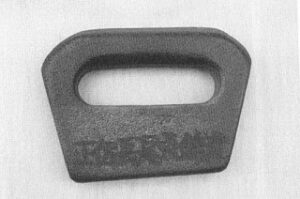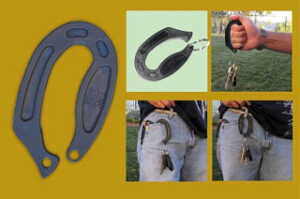Since I am close to my scanner today I thought it might be interesting to look at some of the more unusual knuckle duster type weapons. The first three are all from Serge Mol’s excellent book “Classical Weaponry of Japan” and are (not surprisingly) Japanese.

First is a weapon called a Tesshō. The spikes can be used to strike or to improve the grip while grappling. What is interesting here is that the design would make conventional punching techniques difficult. This weapon would mainly be used for hammer-fist and back-fist strikes.

Second weapon is known as a Mussahi Kaiken or Nago Ryŭ Kaiken. The more common use of the world Kaiken is a type of dagger without a handguard, commonly associated as a weapon for Japanese women.
Story is that when the legendary swordsman Miyamoto Musashi retired he stopped wearing his swords and carried a walking stick instead. Many of Musashi’s victories had been won with wooden weapons so he was hardly harmless. Even old and retired there were still young bloods who wanted to make a name beating Musashi so he also carried a variety of concealed weapons. One was this weapon resembling an axe blade with a hand grip. This was carried wrapped in paper and tucked just inside the fold of his jacket.

The third Japanese weapon is the Nago Ryŭ Tekkan or Bankokuchōki. This is a heavier and more substantial weapon than most Tekken (“Iron Fists”) and is claimed to be designed to be effective against enemies wearing armour. In that light it is perhaps surprising that there are no apparent features to concentrate force.


Indian knuckle weapon called a “hora”. Made from horn.

Some interesting variations in construction. The wood version looks particularly useful.

Some Okinawain Tekko were made from horseshoes. These are obviously not designed with concealment as a priority. The horn-like projections could doubtless be used for defence against longer weapons.

A horseshoe inspired keychain. Very practical.